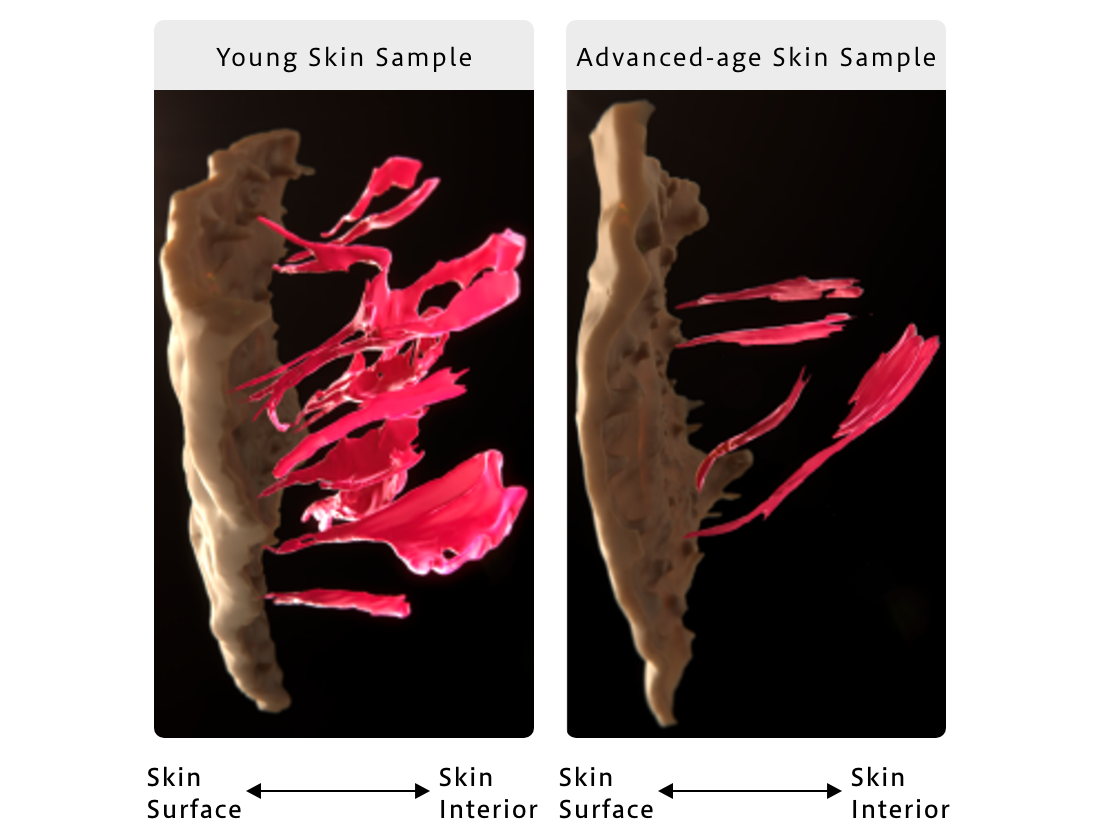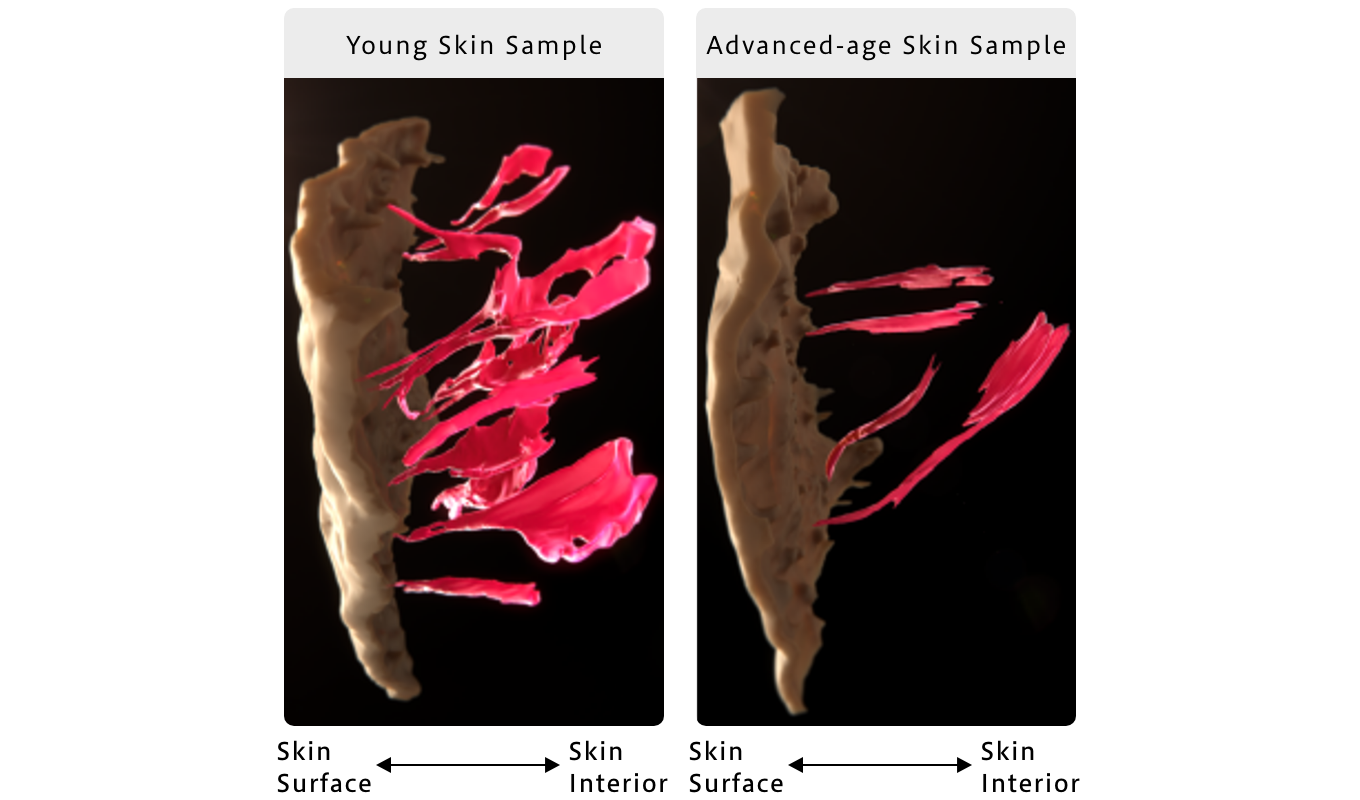





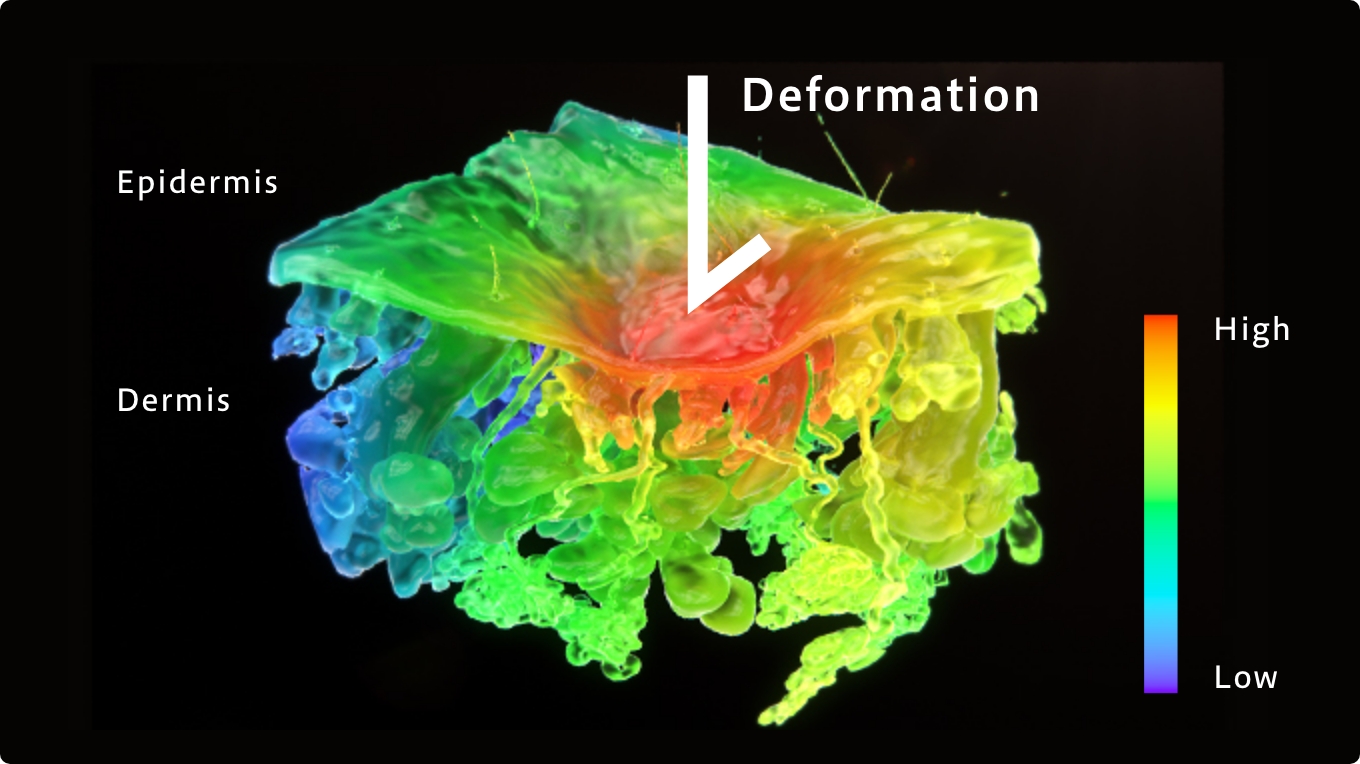
4D Digital Skin technology uses different colors to clearly show the structural changes that occur when the skin as a whole undergoes deformation
Our team developed various cutting-edge technologies in order to identify the root causes of skin sagging. One example of these technologies is “4D Digital Skin,” which shows not only the skin’s structure but also its movements. This unique technology represents a vast improvement over traditional skin analysis methods, which utilize two-dimensional approaches, and has enabled Shiseido to elucidate four major causal factors behind sagging.
We discovered a unique type of structure within the facial skin that maintains the face’s contours and forms, which we have named the “Anchor” structure. This structure is gradually lost due to aging, which eliminates the face’s support structure and consequently causes skin sagging.
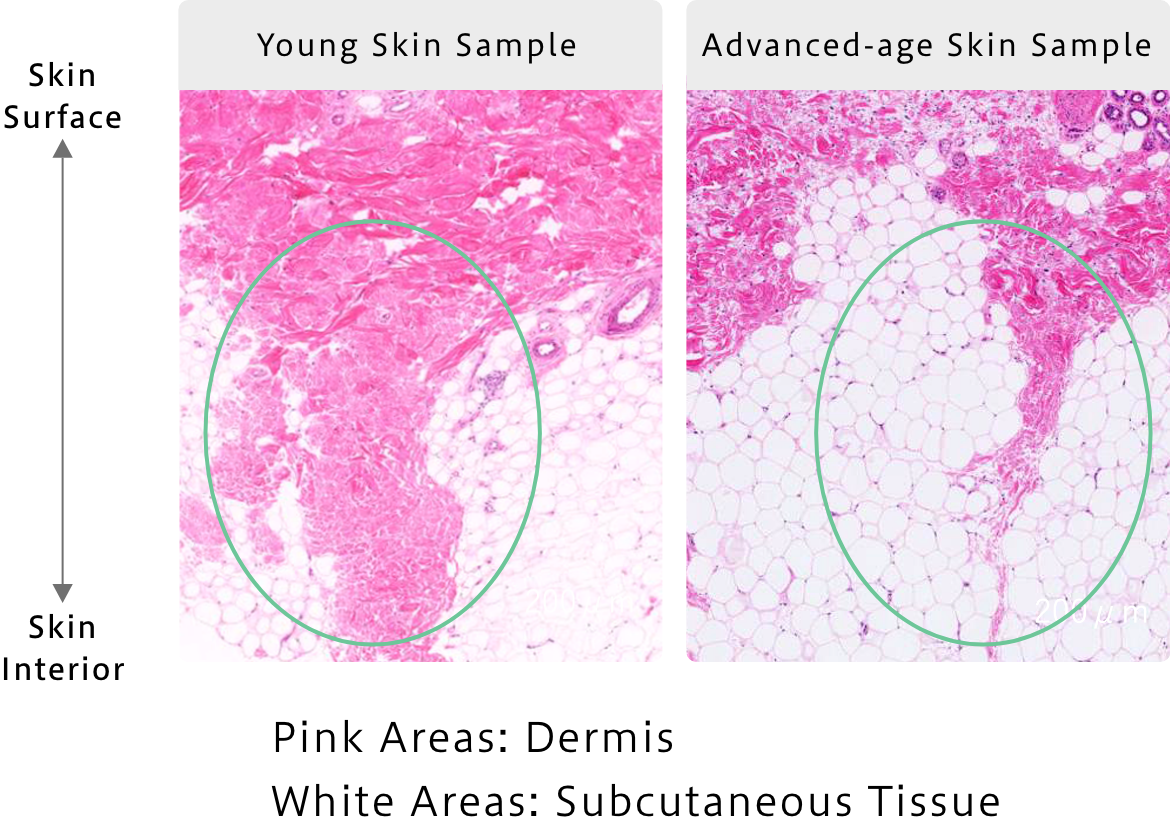
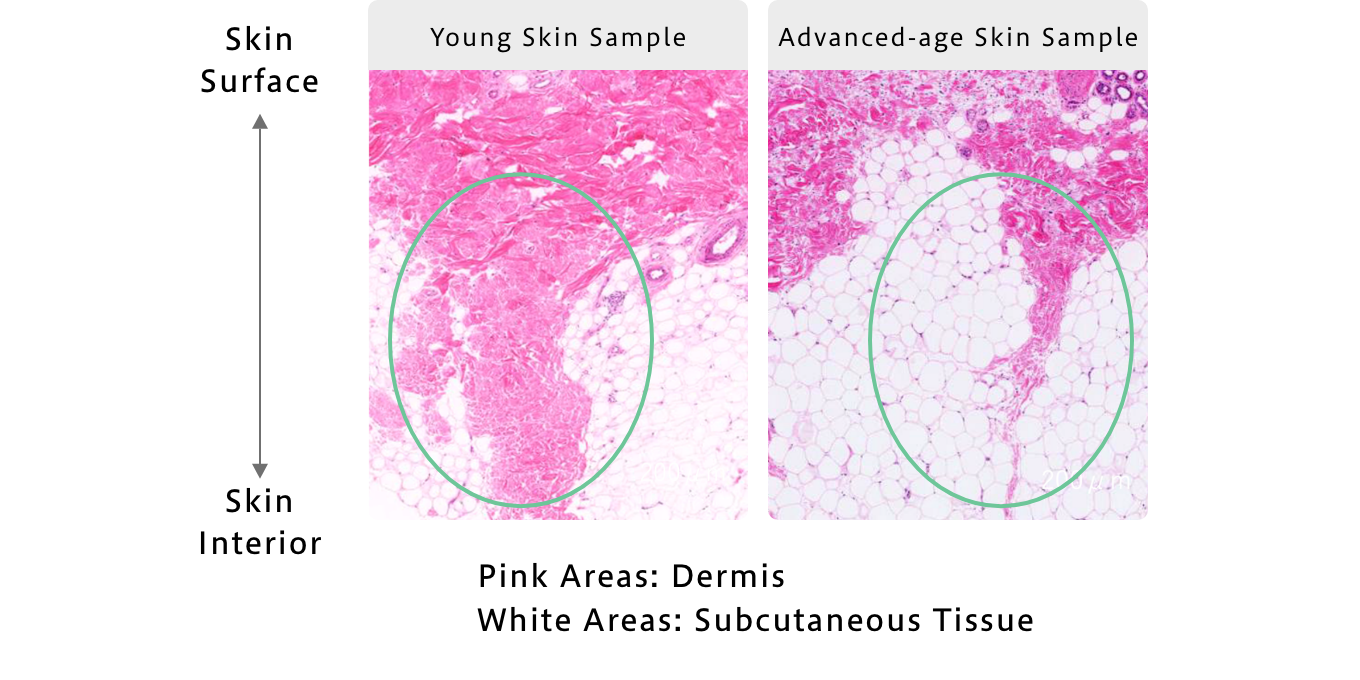
The dermal layer of the skin supplies collagen in order to create skin firmness. Through our research, we discovered that this layer hollows out with age, resulting in the loss of large portions. This “Dermal Cavitation” leads to reduced skin firmness and the progression of sagging.
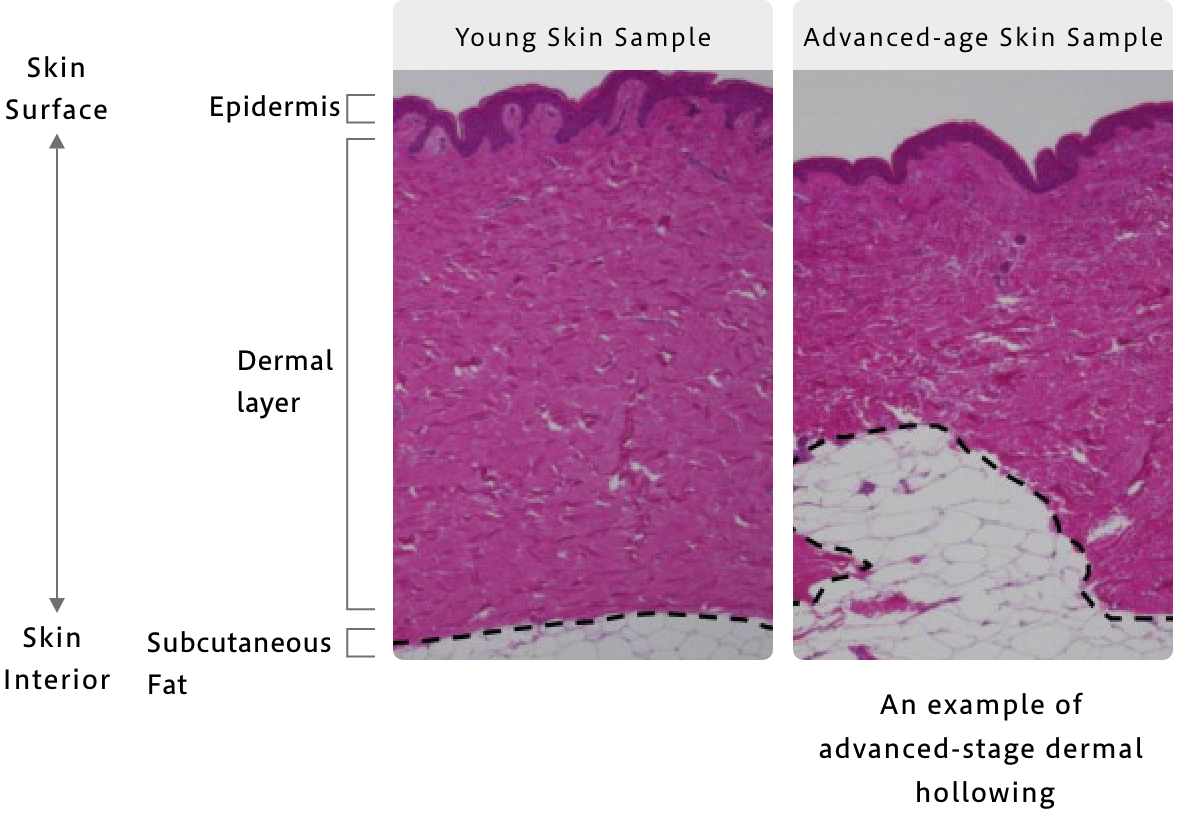
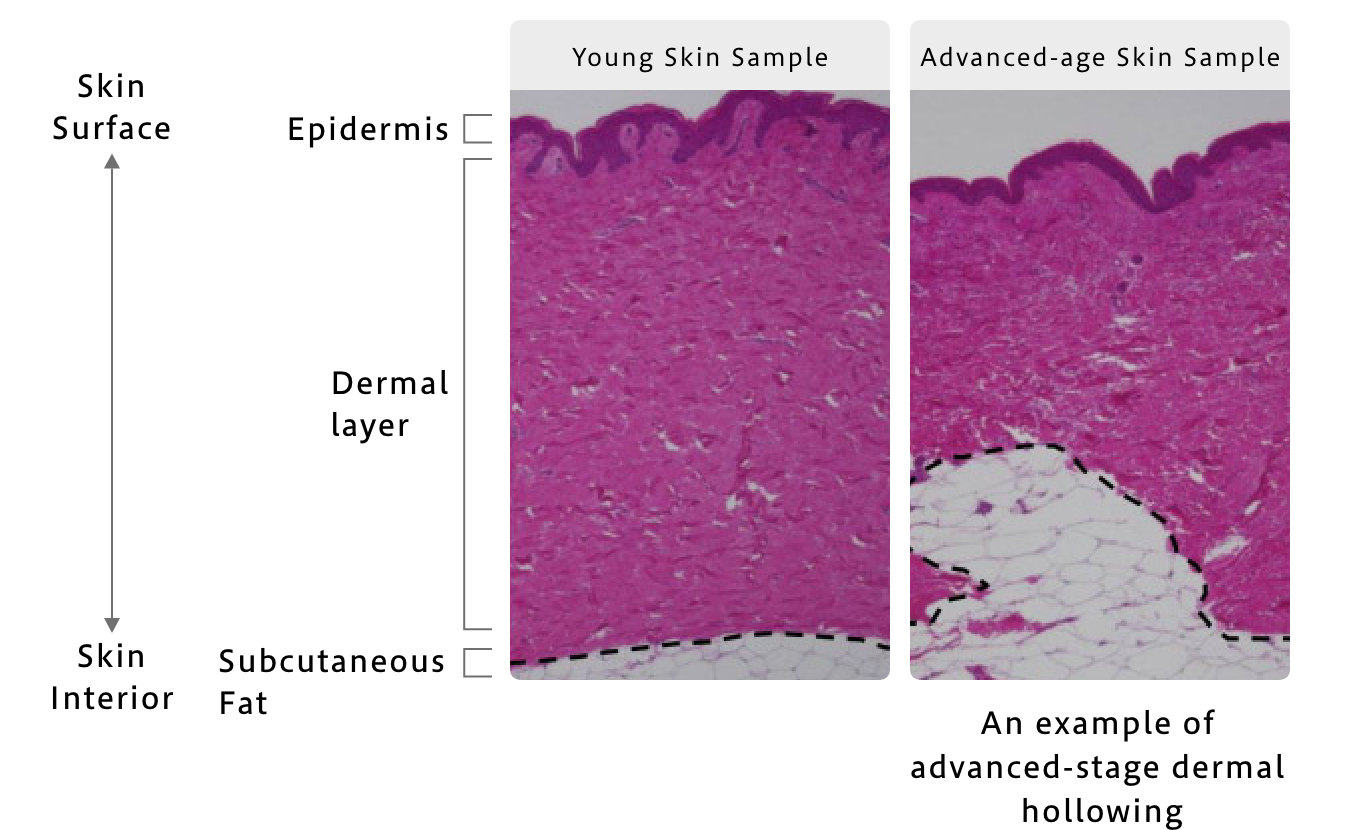
Fibroblasts in the dermal layer of the skin produce collagen, which fosters greater skin firmness. We discovered that mutual interconnections between fibroblasts maintain youthful and firm skin. The loss of this interconnected “Dermal Cell Network” leads to cellular aging, which in turn depletes firmness and brings about sagging.

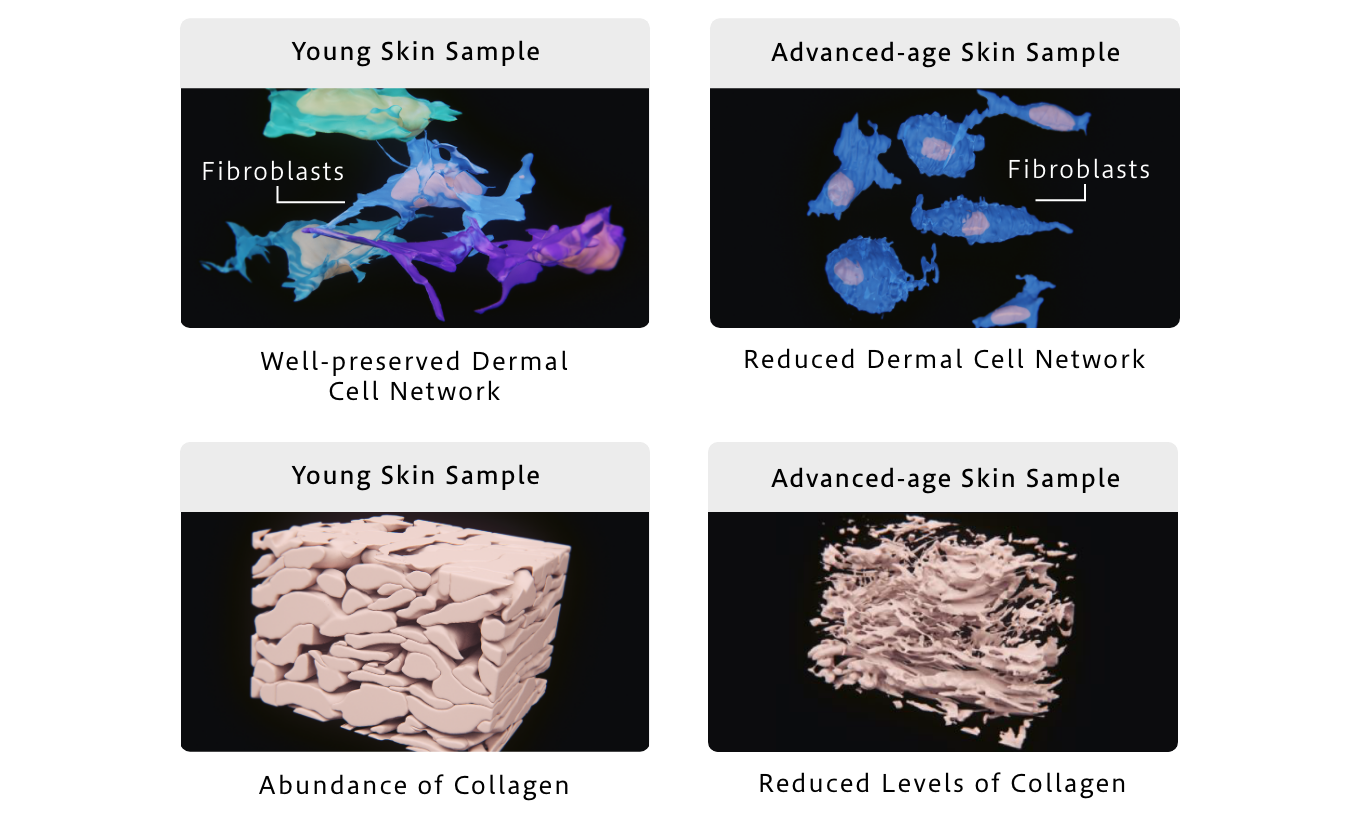
The arrector pili muscles (also called hair erector muscles) are located near the skin’s surface and are responsible for the “goose bumps” sensation we sometimes experience. Research has revealed that these muscles are concentrated within the facial skin and serve to support that skin so that it can resist gravitational forces. We have named this support system the “Dynamic Belt.”
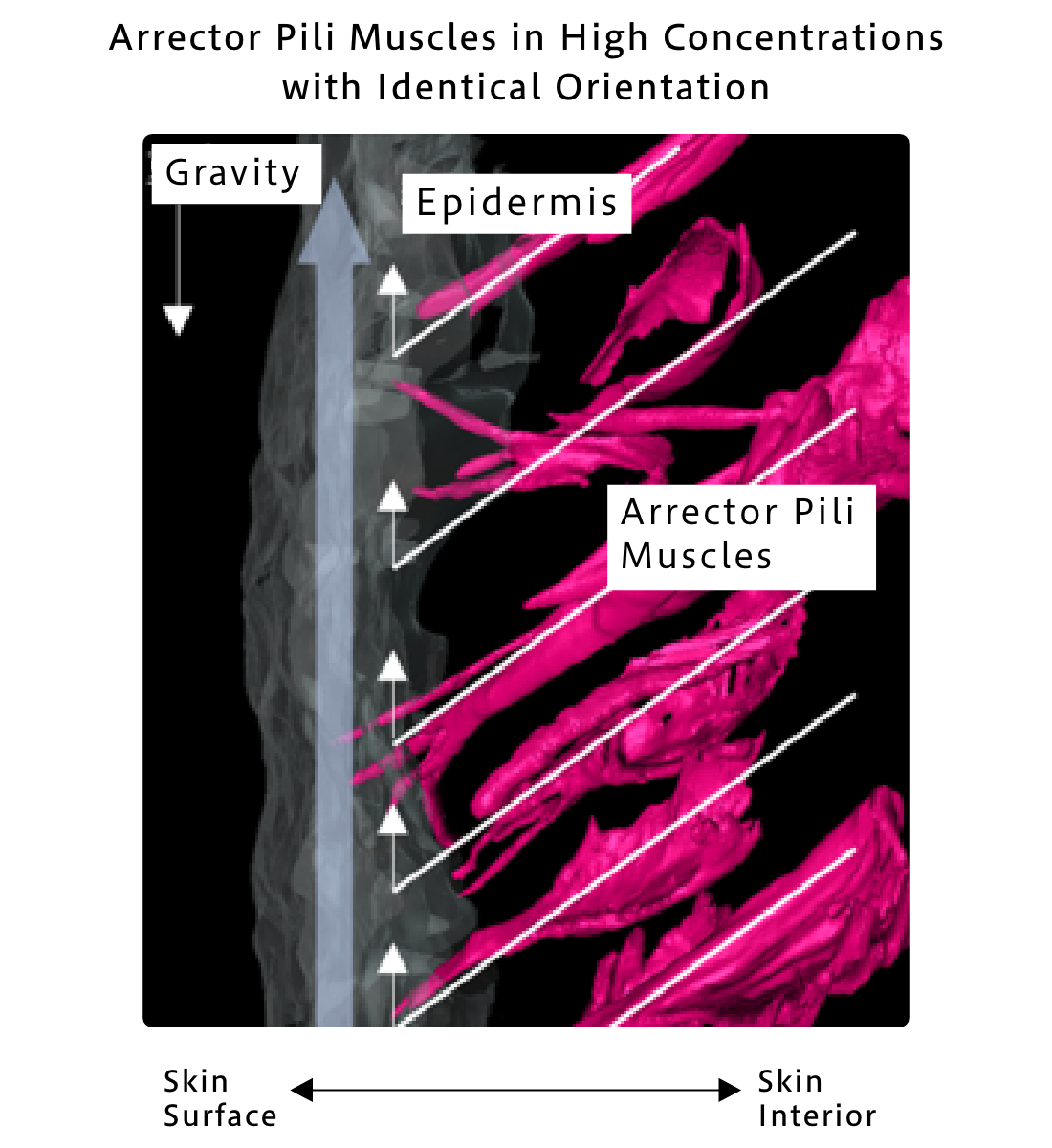
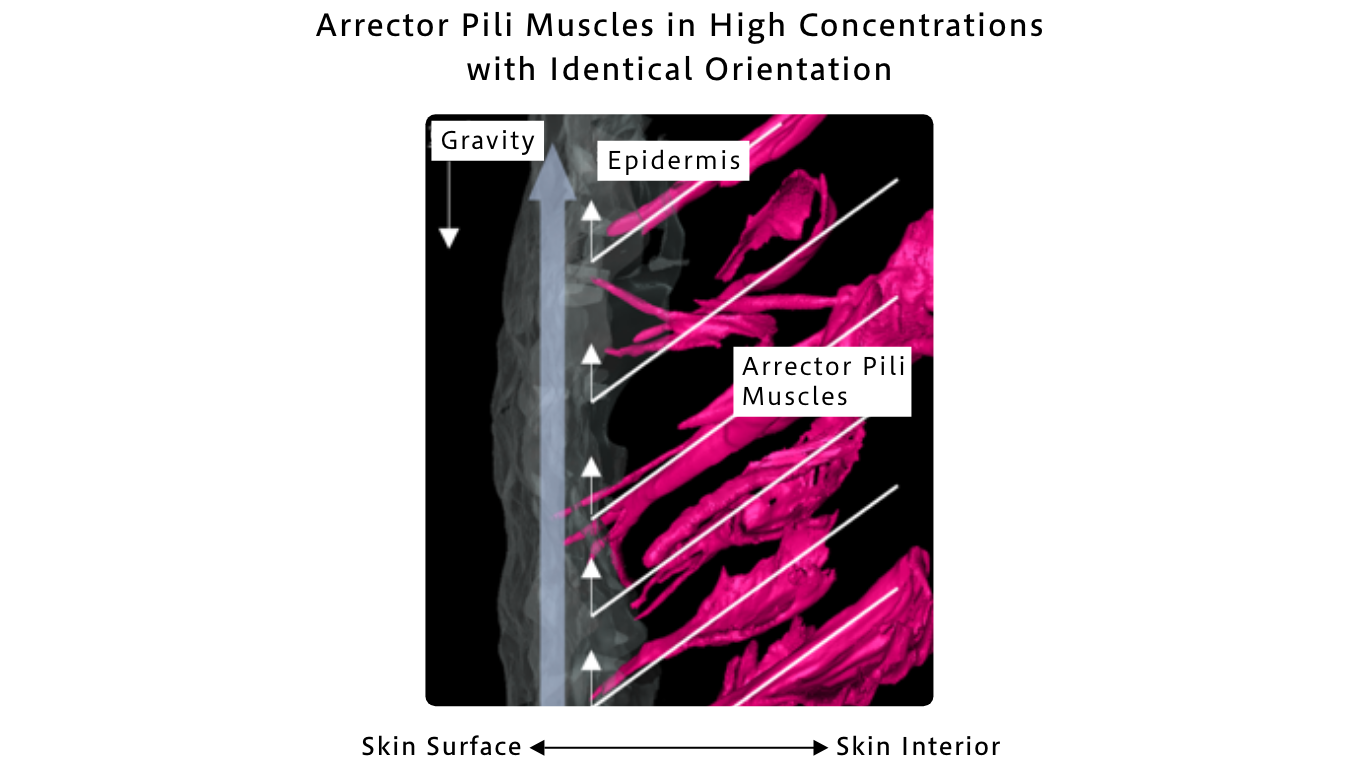
Our research shows that, as arrectores pilorum decline due to aging, sagging increases.
